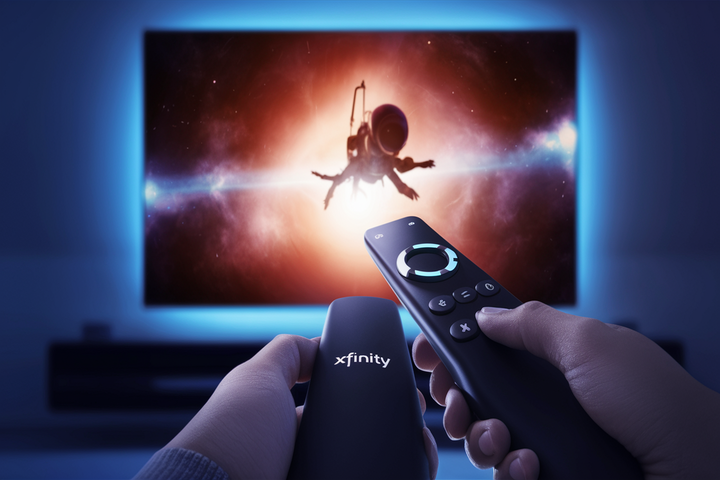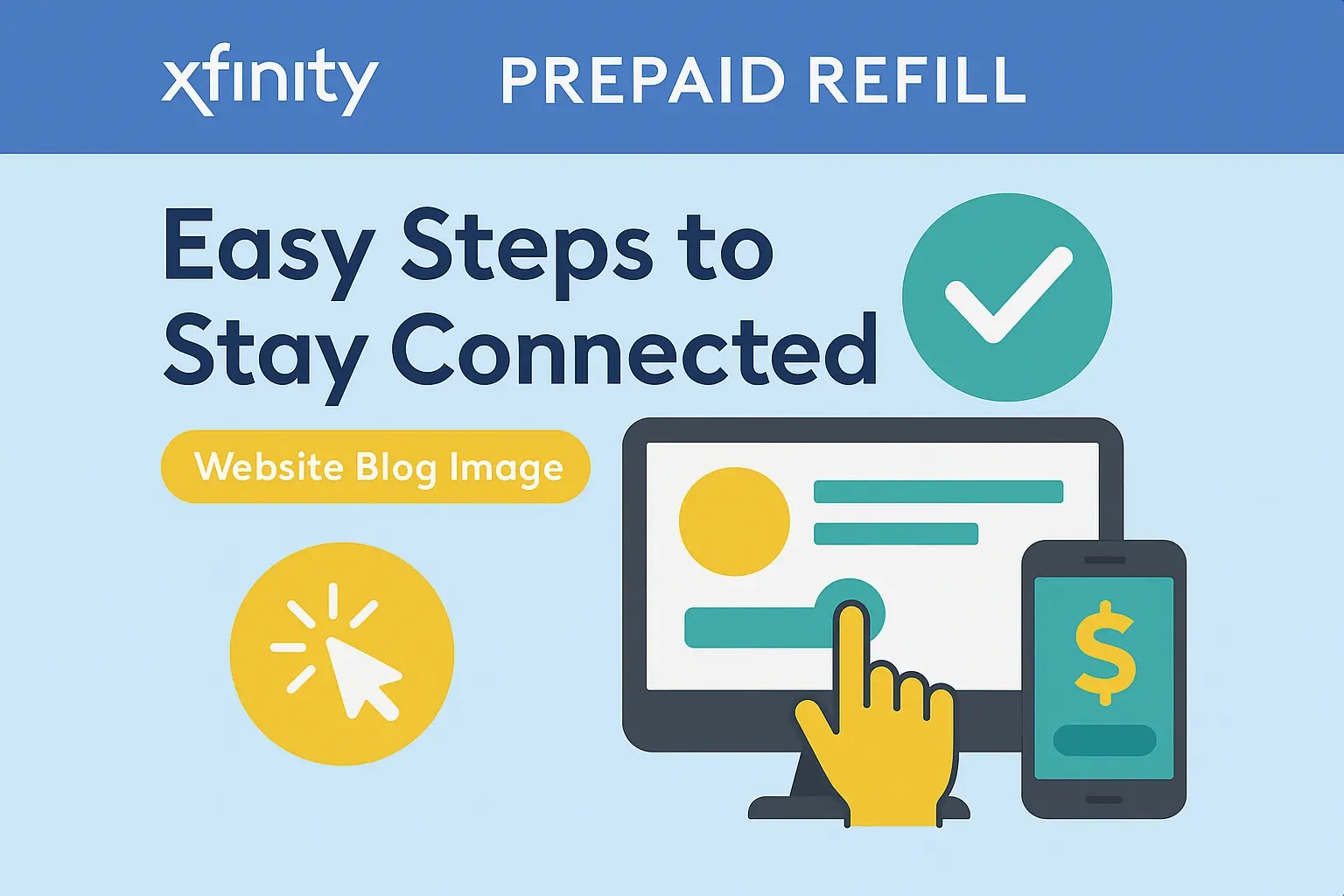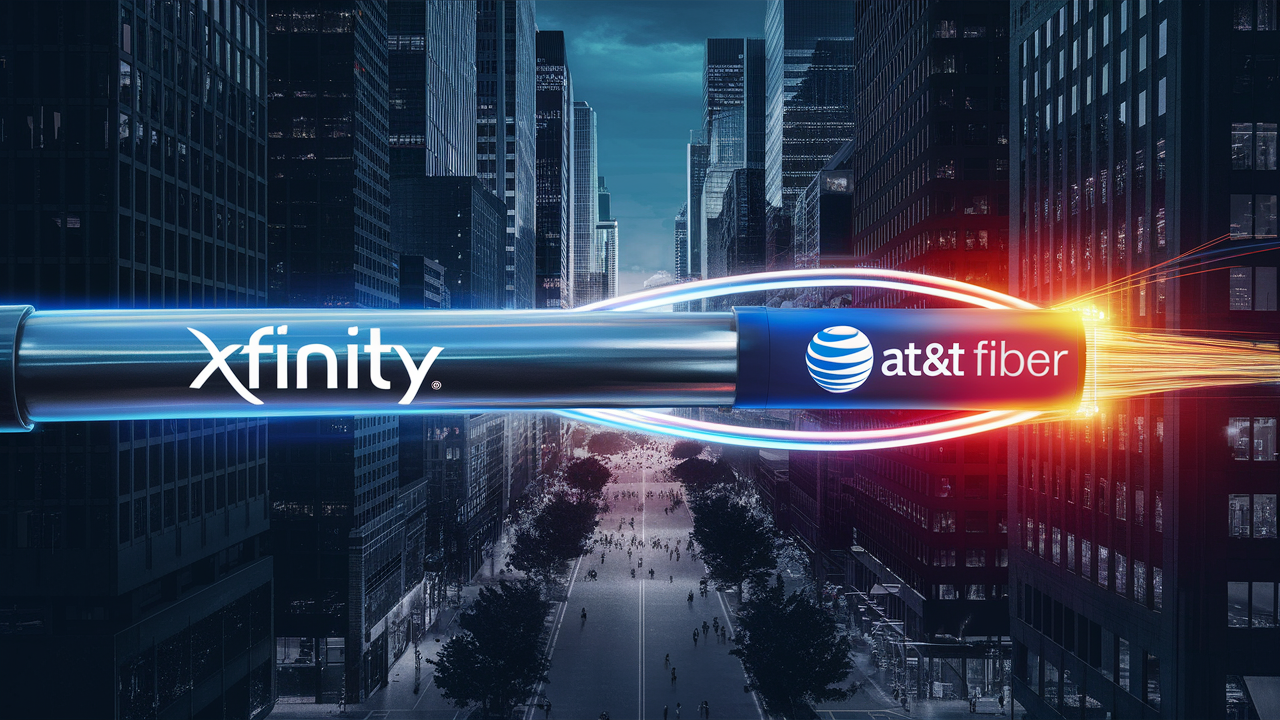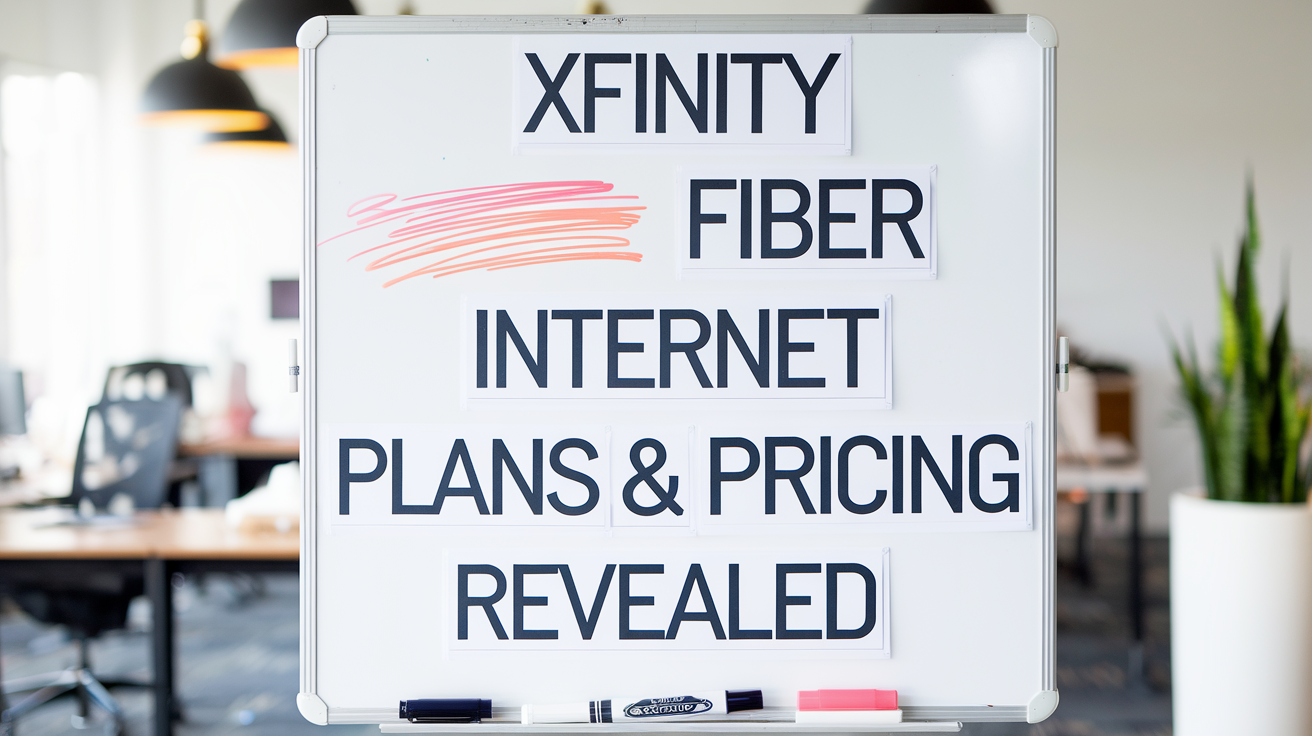How To Set Xfinity Remote To Tv?

Struggling to connect your Xfinity remote to your television? This comprehensive guide will walk you through every step, ensuring you can control your TV seamlessly. We cover all Xfinity remote models and common TV brands, providing clear, actionable instructions to get you set up in minutes.
Understanding Your Xfinity Remote
Before diving into the setup process, it's crucial to understand the different types of Xfinity remotes and their capabilities. Xfinity has released several remote models over the years, each with varying features and pairing mechanisms. The most common models you'll encounter in 2025 are the XR11, XR15, and XR16 series. While they all aim to simplify your entertainment experience, their programming methods can differ slightly.
The XR11, often referred to as the "Voice Remote," was one of the first to integrate voice control. It primarily uses Infrared (IR) signals but can also pair via Radio Frequency (RF) for voice commands. The XR15 and XR16 models are the newer generations, featuring sleeker designs and enhanced voice recognition. These models predominantly use RF and Bluetooth for their advanced features, including voice control and pairing with streaming devices. Understanding which remote you have will help you select the most efficient pairing method.
The core functionality of any Xfinity remote is to control your TV's power, volume, and input selection. However, more advanced remotes can also manage your Xfinity set-top box, soundbar, and even Blu-ray players. The setup process essentially involves teaching your remote the specific signals required to communicate with your television. This is typically achieved through an automatic search for compatible codes or by manually entering a code specific to your TV brand.
In 2025, the landscape of home entertainment continues to evolve, with smart TVs and streaming devices becoming increasingly prevalent. Xfinity remotes are designed to keep pace, offering robust compatibility with a wide range of brands and models. The goal is to consolidate control into a single, user-friendly device, eliminating the clutter of multiple remotes. This guide is meticulously crafted to ensure you can achieve that goal, regardless of your technical expertise or the specific Xfinity remote model you possess.
Preliminary Checks Before You Begin
A smooth setup process hinges on a few critical preliminary checks. Skipping these steps can lead to frustration and wasted time. By ensuring these basics are covered, you significantly increase your chances of a successful pairing on the first try.
1. Identify Your Xfinity Remote Model: As mentioned, knowing your remote model (e.g., XR11, XR15, XR16) is the first step. Look for labels on the back of the remote or check your Xfinity equipment documentation. This information is vital for selecting the correct programming method and troubleshooting steps.
2. Ensure Batteries Are Fresh: Low battery power is a common culprit behind unresponsive remotes. Replace the batteries with new, high-quality ones. Ensure they are inserted correctly, observing the polarity (+/-) markings. This is especially important for RF and Bluetooth-enabled remotes, which require consistent power.
3. Verify TV Compatibility: While Xfinity remotes are designed for broad compatibility, it's wise to confirm your TV brand and model are supported. You can usually find this information on Xfinity's support website or by checking the list of supported brands during the setup process. Most major brands like Samsung, LG, Sony, Vizio, TCL, and Hisense are covered.
4. Check Your TV's Input: Make sure your TV is powered on and set to the correct input source (e.g., HDMI 1, HDMI 2) where your Xfinity set-top box is connected. This ensures the remote can communicate with the TV and the box.
5. Remove Obstructions: If your remote uses Infrared (IR) signals (common for basic TV functions), ensure there's a clear line of sight between the remote and the TV's IR receiver. Remove any objects that might be blocking the signal path.
6. Understand Your Xfinity Equipment: The remote needs to be paired with your Xfinity set-top box or gateway first to control Xfinity services. The TV control is a secondary function. Ensure your Xfinity equipment is powered on and functioning correctly.
7. Consult Your TV Manual: In some rare cases, specific TV models might have unique requirements or settings that affect remote control. Referencing your TV's user manual can be helpful, especially if you encounter persistent issues.
By completing these preliminary checks, you're setting yourself up for a much smoother and more successful experience when learning how to set your Xfinity remote to your TV.
Pairing Methods: The Core of the Process
This section details the primary methods for programming your Xfinity remote to control your television. The best method for you will depend on your remote model and your TV's brand.
Method 1: The Auto-Search (Most Common)
This is the most straightforward and widely used method for programming Xfinity remotes to control your TV. It works by cycling through a database of manufacturer codes until it finds one that operates your television.
Steps:
- Power On Your TV: Ensure your television is turned on.
- Point Remote at TV: Aim the Xfinity remote directly at your TV.
- Press and Hold Setup Button: Locate the Setup button on your Xfinity remote. Press and hold it until the small LED light at the top of the remote turns green (or blinks, depending on the model). This indicates the remote is in programming mode.
- Enter TV Mode: Press and hold the TV button on your remote until the LED light turns solid green again.
- Initiate the Search: Press and hold the Power button on the remote. Keep holding it down. The remote will start sending power-off commands to your TV.
- Release When TV Turns Off: Watch your TV closely. The moment the TV screen turns off, immediately release the Power button.
- Confirm the Code: Press the TV button again. The LED light should blink twice, confirming that a code has been accepted.
- Test Basic Functions: Try using the Volume Up/Down and Channel Up/Down buttons to ensure they control your TV. If they work, congratulations! You've successfully programmed your remote.
- If It Fails: If the TV doesn't turn off, or if basic functions don't work after the confirmation blink, repeat the process from step 3. You might need to try holding the power button for slightly longer or shorter periods.
This auto-search method is highly effective for most modern TVs. It's designed to be user-friendly, requiring minimal input beyond pressing and holding buttons.
Method 2: Manual Code Entry
If the auto-search method doesn't work, or if you know the specific code for your TV brand, manual code entry is the next best option. This method requires you to look up a list of codes provided by Xfinity or your TV manufacturer.
Steps:
- Find Your TV's Code: Consult the Xfinity website (search for "Xfinity remote codes") or your Xfinity user manual for a list of codes specific to your TV brand. You might find multiple codes for a single brand; it's often best to try the first one listed.
- Power On Your TV: Ensure your television is turned on.
- Press and Hold Setup Button: Press and hold the Setup button on your Xfinity remote until the LED light turns green.
- Enter TV Mode: Press and hold the TV button until the LED light turns solid green again.
- Enter the First Code Digit: Using the number pad on your remote, enter the first digit of the TV code you found. The LED light should stay green.
- Enter Remaining Code Digits: Continue entering the remaining digits of the code. After the last digit is entered, the LED light should blink twice, confirming the code has been accepted. If the LED light turns off, it means the code was not valid.
- Test Functions: Try controlling your TV with the Power, Volume, and Channel buttons.
- If It Fails or Partially Works: If the code doesn't work, or if only some functions operate correctly, repeat steps 3-6 using the next code listed for your TV brand. You may need to try several codes before finding one that fully controls your TV.
Example: If you have a Sony TV and the first code listed is 0050, you would press Setup, then TV, then enter 0, 0, 5, 0. The remote should confirm the code.
Having a list of potential codes readily available before you start can save significant time with this method.
Method 3: Voice Command Pairing (XR15/XR16 Remotes)
For newer Xfinity Voice Remotes like the XR15 and XR16, voice commands can simplify the pairing process. This method is often integrated into the initial setup of your Xfinity service or can be initiated through the on-screen menus.
Steps:
- Power On TV and Xfinity Box: Ensure both your TV and Xfinity set-top box are powered on.
- Press and Hold the Mic Button: On your XR15 or XR16 remote, press and hold the Microphone button.
- Speak the Command: While holding the Mic button, say clearly, "Pair remote" or "Set up remote."
- Follow On-Screen Prompts: Your Xfinity TV box should display on-screen instructions. It might ask you to point the remote at the box or confirm your TV brand.
- Automatic Code Search: The system will likely initiate an automatic code search similar to Method 1, but guided by voice prompts. You may be asked to press the Up Arrow button when your TV turns off.
- Confirm and Test: Once the TV powers off and restarts, the system will confirm the pairing. Test the volume, channel, and power buttons.
Alternatively, you can often initiate this through the Xfinity box's settings menu:
- Navigate to Settings: Using your Xfinity remote (even if not fully programmed yet), navigate to Settings on your TV screen.
- Select Device Settings: Choose Device Settings or a similar option.
- Select Remote: Find and select the Remote option.
- Choose Pair Remote: Select Pair Remote or Set up Remote.
- Follow On-Screen Instructions: The system will guide you through the voice-assisted pairing process.
This method leverages the voice capabilities of the remote and the intelligence of the Xfinity system to streamline the setup.
Method 4: Bluetooth Pairing (for Streaming Boxes)
Some Xfinity remotes, particularly the XR15 and XR16, can also pair with streaming devices like Apple TV, Roku, or Amazon Fire TV using Bluetooth. This is separate from TV control but essential for controlling those specific devices with your Xfinity remote.
Steps:
- Enable Pairing Mode on Streaming Device: Consult your streaming device's manual for instructions on how to put it into Bluetooth pairing mode. This usually involves going into the device's settings menu and selecting "Add Bluetooth Device" or similar.
- Put Xfinity Remote in Pairing Mode: On your Xfinity remote (XR15/XR16), press and hold the Back button and the Home button simultaneously for approximately 5-10 seconds. The LED light at the top of the remote should start blinking rapidly, indicating it's discoverable.
- Select Remote on Streaming Device: On your streaming device's screen, you should see your Xfinity remote appear in the list of available Bluetooth devices. Select it to pair.
- Confirm Pairing: Follow any on-screen prompts on both the streaming device and potentially your TV to confirm the pairing.
- Test Functionality: Once paired, test the remote's navigation, selection, and voice command features with your streaming device.
This Bluetooth pairing is crucial if you use your Xfinity remote to control applications or interfaces on devices other than your primary TV and Xfinity box.
Comparison of Pairing Methods
Here's a quick overview to help you choose the right method:
| Method | Best For | Pros | Cons |
|---|---|---|---|
| Auto-Search | Most users, standard TV control | Easy, no codes needed, quick | May require multiple attempts |
| Manual Code Entry | When auto-search fails, specific TV brands | Precise, can be faster if code is known | Requires finding codes, can be tedious |
| Voice Command Pairing | XR15/XR16 remotes, users preferring voice guidance | Intuitive, uses voice prompts | Limited to newer remotes |
| Bluetooth Pairing | XR15/XR16 remotes, controlling streaming devices | Enables control of non-Xfinity devices | Separate from TV control, specific remotes only |
Troubleshooting Common Issues
Even with the best guides, you might encounter hiccups. Here’s how to address the most common problems when setting up your Xfinity remote.
Remote Not Responding at All
Cause: Dead batteries, remote not paired to the Xfinity box, or physical damage.
Solution:
- Replace Batteries: This is the most common fix. Use fresh, high-quality batteries.
- Re-pair with Xfinity Box: Even if it was paired before, try re-pairing it. For XR15/XR16 remotes, press and hold Back + Home. For older remotes, press and hold Setup until the light turns green, then press Xfinity button. Follow on-screen prompts.
- Check Line of Sight (IR Remotes): Ensure nothing is blocking the path between the remote and the Xfinity box or TV.
- Inspect Remote: Look for any visible damage. If damaged, you may need a replacement.
Specific Buttons Not Working
Cause: Incomplete TV pairing, interference, or a faulty button.
Solution:
- Re-program Remote: Try re-running the auto-search or manual code entry process. It's possible the initial programming didn't capture all functions.
- Check TV Input: Ensure your TV is on the correct input for the Xfinity box.
- Test Other Functions: If volume works but channel doesn't, it points to a specific code issue or a faulty button.
- Check for Interference (RF/Bluetooth): Other wireless devices can sometimes interfere. Try moving other electronics further away.
- Clean Buttons: Gently clean around the buttons with a dry cloth or a cotton swab lightly dampened with isopropyl alcohol (ensure the remote is off and batteries are removed).
Pairing Fails Repeatedly
Cause: Incorrect procedure, outdated software on Xfinity box, or remote not compatible.
Solution:
- Follow Steps Precisely: Go back and meticulously follow the steps for your chosen pairing method. Pay close attention to timing (how long to hold buttons).
- Restart Xfinity Equipment: Power cycle your Xfinity set-top box and modem/router. Wait a few minutes before attempting to pair again.
- Update Xfinity Box Software: Ensure your Xfinity equipment has the latest software updates. This can often be checked in the settings menu.
- Try a Different Method: If auto-search fails, try manual code entry, or vice-versa.
- Check Remote Compatibility: Confirm your remote model is supported for your specific Xfinity service tier.
Remote Controls the Wrong Device
Cause: Incorrect code selected, or the remote is programmed for a different device unintentionally.
Solution:
- Reset Remote: Consult your remote's manual for a reset procedure. Often, this involves holding specific buttons.
- Re-program Carefully: Go through the auto-search or manual code entry process again, ensuring you are selecting the correct TV brand. If using manual codes, try a different code for your brand.
- Check Other Device Settings: If you have other devices (soundbar, Blu-ray player) programmed, ensure the remote is set to control the TV when you intend to. You might need to press the 'TV' button before other commands.
Battery-Related Problems
Cause: Low battery, incorrect insertion, or faulty batteries.
Solution:
- Always Use New Batteries: Don't assume partially used batteries will work.
- Check Polarity: Ensure the + and - ends of the batteries align with the markings inside the battery compartment.
- Clean Battery Contacts: If the contacts look corroded or dirty, gently clean them with a pencil eraser or a cotton swab with a tiny bit of white vinegar, then dry thoroughly.
- Test Batteries: If you have a battery tester, check the voltage of your batteries.
For 2025, Xfinity continues to refine its remote technology, but these fundamental troubleshooting steps remain consistent for ensuring optimal performance.
Advanced Tips and Settings
Once your Xfinity remote is successfully paired with your TV, you can explore advanced features to enhance your viewing experience. These tips can help you consolidate control and personalize your setup.
Programming for Multiple Devices
Most Xfinity remotes (especially XR11, XR15, XR16) can control more than just your TV. You can often program them to control your Xfinity set-top box, soundbar, and Blu-ray/DVD player. This is typically done after the TV is programmed.
General Steps:
- Program TV First: Ensure your TV is successfully programmed using one of the methods described earlier.
- Press and Hold Setup: Press and hold the Setup button until the LED turns green.
- Select Device Button: Press and hold the button for the device you want to program (e.g., AUD for audio devices/soundbars, DVD for Blu-ray/DVD players). Hold until the LED turns green again.
- Initiate Auto-Search or Enter Code: Follow the same auto-search or manual code entry process as you did for the TV, but this time the remote will be searching for codes for the selected device. Refer to Xfinity's support site for specific codes for audio equipment and players.
- Test Functions: Once programmed, test the volume, playback controls, etc., for the new device. You may need to press the device button (TV, AUD, DVD) before using other buttons to ensure the remote is sending commands to the correct device.
Example: To program a soundbar, you might press Setup, hold AUD, then initiate an auto-search using the volume buttons.
Note: Bluetooth pairing (Method 4) is used for streaming devices and works differently than IR/RF code programming for traditional devices.
Customizing Button Functions
Some Xfinity remotes allow for limited customization of button functions, particularly the colored buttons (Red, Green, Yellow, Blue) and potentially the programmable keys. This is often done via the Xfinity set-top box's settings menu.
General Steps:
- Navigate to Settings: On your Xfinity box, go to Settings.
- Select Device Settings: Choose Device Settings.
- Select Remote: Find and select the Remote option.
- Look for Button Customization: You might see options like "Customize Buttons" or "Programmable Keys."
- Assign Functions: Follow the on-screen prompts to assign specific functions to the colored buttons or other programmable keys. For example, you might assign the Blue button to launch a specific app or the Yellow button to access closed captions.
The availability of these customization options varies significantly by remote model and Xfinity software version. Check your specific device's settings for available features.
Understanding IR vs. RF Remotes
Xfinity remotes utilize different technologies for communication, impacting how they work and how you set them up.
- Infrared (IR): This is the traditional technology used by most remotes. It requires a direct line of sight between the remote and the device it's controlling. If there's anything blocking the path (like a cabinet door), the signal won't reach. Programming IR remotes usually involves pointing them directly at the TV or device during setup.
- Radio Frequency (RF): Newer Xfinity remotes, especially those with voice control (XR11, XR15, XR16), often use RF. RF signals don't require a direct line of sight and can pass through solid objects. This is why voice commands work even if the remote isn't pointed directly at the Xfinity box. RF pairing usually involves a specific button combination or an on-screen pairing process with the Xfinity box.
- Bluetooth: Used primarily for pairing with streaming devices, Bluetooth is a short-range wireless technology that doesn't require line of sight. It offers a stable connection for controlling devices like Apple TV or Fire TV.
Implications for Setup:
- IR Setup: Ensure clear line of sight during programming and operation.
- RF Setup: Pairing often involves the Xfinity box itself. Ensure the remote is within range of the box. Voice commands are a key benefit.
- Bluetooth Setup: Requires pairing through the specific device's settings menu.
Most modern Xfinity remotes are capable of both IR (for TV control) and RF/Bluetooth (for Xfinity box and other devices). Understanding this distinction helps in troubleshooting and utilizing the full capabilities of your remote.
Xfinity Remote Model Comparison
To further clarify which methods are most applicable, here's a brief comparison of common Xfinity remote models you might encounter in 2025:
| Model | Primary Technology | Voice Control | TV Pairing Methods | Other Device Pairing |
|---|---|---|---|---|
| XR11 | IR & RF | Yes | Auto-Search, Manual Code Entry | Soundbar, DVD/Blu-ray (via IR/RF codes) |
| XR15 | RF & Bluetooth | Yes | Auto-Search, Manual Code Entry, Voice Command Pairing | Streaming Devices (via Bluetooth), Soundbar/DVD (via IR/RF codes) |
| XR16 | RF & Bluetooth | Yes | Auto-Search, Manual Code Entry, Voice Command Pairing | Streaming Devices (via Bluetooth), Soundbar/DVD (via IR/RF codes) |
| Older Models (e.g., R150) | IR | No | Manual Code Entry (primarily) | Limited, primarily TV control |
This table highlights the progression towards more advanced, multi-functional remotes. For the latest models (XR15/XR16), leveraging voice commands and Bluetooth pairing offers the most streamlined experience for controlling a modern entertainment setup.
Conclusion: Mastering Your Xfinity Remote
Successfully setting your Xfinity remote to your TV is a fundamental step towards a seamless entertainment experience. We've covered the essential preliminary checks, detailed the primary pairing methods – including the widely effective auto-search, precise manual code entry, intuitive voice command pairing for newer models, and Bluetooth setup for streaming devices. Furthermore, we've equipped you with troubleshooting strategies for common issues and highlighted advanced tips for programming multiple devices and understanding your remote's technology.
By following the step-by-step instructions tailored to your specific Xfinity remote model, you can overcome setup challenges and unlock the full potential of your device. Remember that patience and precision are key. If one method doesn't yield immediate results, don't hesitate to try another or revisit the troubleshooting section. The goal is to consolidate your control, reduce clutter, and simplify how you interact with your home entertainment system.
For 2025, Xfinity continues to innovate, but the core principles of remote setup remain consistent. Embrace the power of your Xfinity remote, and enjoy effortless control over your television and connected devices. Happy viewing!





